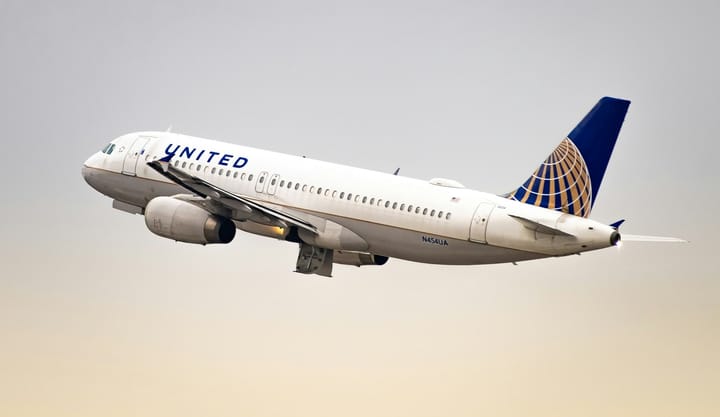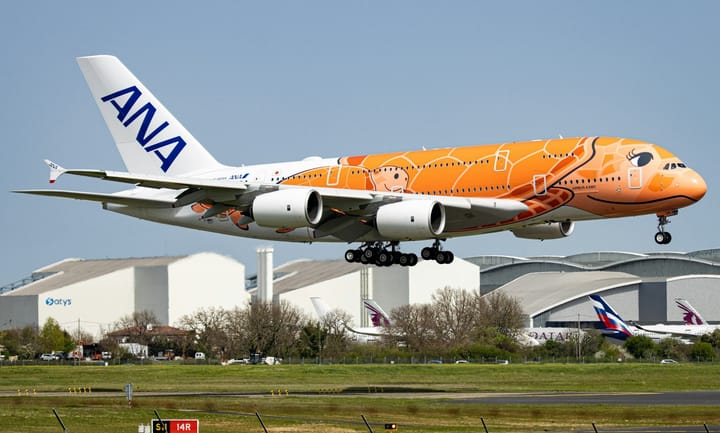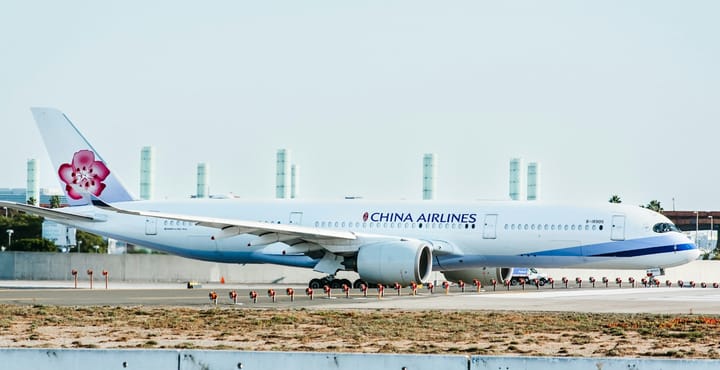A detailed analysis of American Airlines' operations and financial performance, including passengers, flights, ASM, RPM, load factor, and a breakdown of operating revenue and net income, providing insights into the airline's efficiency and overall financial health.
1. Total Passengers Carried
In 2023, American Airlines transported approximately 164.37 million passengers, marking a 9% increase from the 150.81 million passengers in 2022. This growth reflects a recovery trajectory post-pandemic, though it remains slightly below the pre-pandemic peak of 155.78 million passengers in 2019. The airline's extensive network, encompassing over 350 destinations across 48 countries, facilitated this passenger volume. The integration of regional carriers under the American Eagle brand contributed significantly, enabling connectivity between smaller markets and major hubs, thus optimizing passenger flow and aircraft utilization.
The merger with US Airways in 2013 significantly expanded American Airlines' domestic footprint, enhancing market penetration and scheduling flexibility. This consolidation allowed for more efficient aircraft deployment and optimized flight frequencies, directly impacting passenger volume growth. The expanded network provided passengers with increased travel options, thereby enhancing customer satisfaction and loyalty. The strategic realignment post-merger positioned American Airlines to better compete in both domestic and international markets.
American Airlines' commitment to safety and operational excellence is evident in its substantial investment in training and safety programs. In 2023, the airline's team members participated in over 510,000 hours of safety training, reinforcing a culture of safety critical to maintaining passenger trust and confidence. This emphasis on safety ensures compliance with regulatory standards and contributes to the airline's reputation, a significant factor in attracting and retaining passengers.
Technological advancements have played a significant role in enhancing the passenger experience. The implementation of Smart Gating technology reduced taxi times by an average of 20%, minimizing delays and improving on-time performance. Additionally, the introduction of biometric screening processes at key hubs expedited passenger processing times, further streamlining the travel experience. These innovations improve operational efficiency and contribute to higher customer satisfaction scores, critical metrics in the competitive airline industry.
The AAdvantage frequent flyer program, with over 115 million members, underscores American Airlines' focus on customer loyalty and retention. By offering a range of benefits and rewards, the program incentivizes repeat travel and fosters a strong customer base. The integration of co-branded credit cards and partnerships with other service providers extends the program's reach and enhances its value proposition. This strategic approach to customer engagement directly influences passenger volume by encouraging continued patronage.
2. Total Flights Operated
American Airlines' extensive flight operations are a result of meticulous network planning and fleet management. Operating approximately ∼3,200 flights daily, the airline leverages its ten hubs to facilitate efficient aircraft rotations and crew scheduling. This operational complexity requires advanced logistical coordination to maintain high utilization rates and minimize turnaround times. The airline's ability to sustain such a high volume of flights is indicative of its robust infrastructure and strategic planning capabilities.
Fleet modernization efforts have been central to American Airlines' strategy to enhance operational efficiency. The introduction of fuel-efficient aircraft such as the Boeing 787 Dreamliner and Airbus A321neo has allowed the airline to reduce operating costs and environmental impact. These aircraft offer extended range and improved performance, enabling the airline to open new routes and increase flight frequencies on existing ones. Such investments in fleet renewal are critical in maintaining a competitive edge in the industry.
The airline's focus on technological innovation extends to its operational systems. The deployment of Smart Gating technology has optimized gate assignments, reducing instances of gate conflicts and improving overall airport throughput. This system, initially implemented at Dallas/Fort Worth International Airport, has been expanded to other major hubs, demonstrating its effectiveness in enhancing operational efficiency. By leveraging real-time data, the airline can make informed decisions that streamline flight operations and improve punctuality.
American Airlines' commitment to operational excellence is reflected in its 2023 performance metrics. The airline achieved its best completion factor in company history and the strongest on-time performance since 2017, despite a 6% increase in passenger volume. These achievements underscore the effectiveness of the airline's strategic initiatives and its ability to adapt to increasing operational demands without compromising service quality.
In preparation for peak travel periods, American Airlines has demonstrated proactive capacity planning. For the summer travel season, the airline scheduled over 715,000 flights, anticipating increased demand and ensuring adequate resources were in place to handle the surge. This level of foresight and planning is essential in maintaining service reliability and meeting customer expectations during high-demand periods.
3. Available Seat Miles (ASM)
Available Seat Miles (ASM) serve as a fundamental metric in assessing an airline's capacity and operational scale. For American Airlines, ASM reflects strategic decisions encompassing fleet composition, route network expansion, and frequency adjustments. In the first quarter of 2025, American reported 61.6 billion ASMs, a slight decrease from the previous year, indicating a measured approach to capacity management amid fluctuating demand. This deliberate calibration ensures optimal resource utilization and aligns with the airline's focus on profitability over sheer volume.
The airline's fleet modernization initiatives have significantly influenced ASM trends. The introduction of fuel-efficient aircraft, such as the Boeing 787 Dreamliner and Airbus A321neo, has enabled American to offer increased capacity on long-haul and high-demand routes while reducing operating costs. These aircraft not only contribute to higher ASMs but also support the airline's sustainability goals by lowering emissions per seat mile. The strategic deployment of these aircraft types reflects American's commitment to aligning capacity growth with environmental responsibility.
American's hub-and-spoke model, centered around key airports like Dallas/Fort Worth, Charlotte, and Miami, facilitates efficient ASM deployment. By concentrating operations in these hubs, the airline can maximize aircraft utilization and offer a broad network of connections. This network design supports a high volume of ASMs, particularly in domestic markets, and allows for flexibility in adjusting capacity to meet regional demand variations. The model also enhances the airline's ability to capture connecting traffic, further optimizing seat mile availability.
Seasonal adjustments and market-specific strategies play a crucial role in ASM allocation. During peak travel periods, such as summer and holidays, American increases capacity on leisure-oriented routes to destinations like the Caribbean and Europe. Conversely, in off-peak seasons, the airline may reduce frequencies or deploy smaller aircraft to maintain load factors and yield. This dynamic capacity management ensures that ASMs are aligned with demand patterns, enhancing operational efficiency and financial performance.
4. Revenue Passenger Miles (RPM)
Revenue Passenger Miles (RPM) quantify the volume of paying passenger traffic and serve as a critical indicator of an airline's revenue-generating performance. In the first quarter of 2025, American Airlines reported ∼50 billion RPMs, reflecting a 3.7% decrease from the previous year. This decline underscores the impact of fluctuating demand dynamics, particularly in domestic markets, and highlights the importance of agile capacity and revenue management strategies.
The alignment between RPM and ASM is pivotal in assessing load factors and overall efficiency. American's load factor, derived from the ratio of RPM to ASM, provides insights into seat utilization and revenue optimization. A decline in RPM without a corresponding reduction in ASM can lead to lower load factors, indicating underutilized capacity. Therefore, maintaining a balance between available capacity and passenger demand is essential for sustaining profitability.
Market segmentation and targeted marketing efforts influence RPM outcomes. American's focus on premium cabins, loyalty programs, and corporate travel contracts aims to attract high-yield passengers, thereby enhancing RPMs. The airline's AAdvantage program, with over 115 million members, plays a significant role in driving repeat business and increasing revenue per passenger mile. Additionally, partnerships with credit card companies and other ancillary revenue streams contribute to the overall RPM performance.
International operations contribute substantially to American's RPM figures. Transatlantic and Latin American routes, in particular, offer opportunities for higher revenue per mile due to longer stage lengths and premium demand. Strategic alliances and codeshare agreements expand the airline's global reach, enabling access to new markets and customer segments. These international partnerships are instrumental in bolstering RPMs and enhancing the airline's competitive position in the global aviation landscape.
Technological investments in booking platforms, dynamic pricing, and customer analytics have refined American's ability to maximize RPMs. Advanced revenue management systems allow for real-time adjustments to fares and inventory, aligning pricing strategies with demand fluctuations. These tools enable the airline to capture incremental revenue opportunities and optimize passenger loads across its network. Such innovations are integral to sustaining and growing RPMs in a competitive and dynamic market environment.
5. Passenger Load Factor (%) Analysis
Passenger Load Factor (PLF) is a critical efficiency metric, representing the percentage of available seating capacity that is actually filled with paying passengers. In Q1 2025, American Airlines reported a PLF of 80.8%, marking a decline from previous quarters and missing analyst expectations. This downturn reflects challenges in matching capacity with demand, particularly in the domestic leisure segment, which experienced softness during the quarter. The dip in PLF indicates potential overcapacity or underperforming routes, necessitating strategic adjustments to align supply with market demand.
The PLF is influenced by various factors, including network planning, fleet utilization, and market dynamics. American's extensive network, while offering broad connectivity, requires meticulous demand forecasting to ensure optimal seat occupancy. The integration of new aircraft types, such as the Boeing 787 and Airbus A321neo, adds complexity to capacity planning due to differences in seating configurations and route suitability. Effective yield management and dynamic pricing strategies are essential to maximize PLF across diverse markets and travel seasons.
Comparatively, the airline's PLF performance must be assessed against industry benchmarks and historical data. A declining PLF, in the context of stable or increasing Available Seat Miles (ASM), suggests inefficiencies in route planning or market saturation. Addressing these issues may involve reevaluating route profitability, adjusting flight frequencies, or deploying aircraft with appropriate capacities. Maintaining a high PLF is vital for revenue optimization and cost management, directly impacting the airline's financial health.
6. Financial Performance Analysis
American Airlines' financial performance in Q1 2025 reflects the challenges posed by economic uncertainties and fluctuating demand. The airline reported an adjusted net loss of $0.59 per share, surpassing the anticipated loss of $0.69 per share, and operating revenue of $12.55 billion, slightly above the expected $12.53 billion. Despite these figures, the company withdrew its full-year 2025 financial outlook, citing the unpredictable economic landscape and its impact on travel demand.
The decision to retract the annual forecast aligns with similar moves by other major carriers, reflecting industry-wide caution. American's Q1 performance underscores the importance of agile financial planning and the need to adapt to rapidly changing market conditions. The airline's focus on operational efficiency and cost control will be critical in navigating the uncertainties ahead and positioning for recovery as market conditions stabilize.
6.1. Operating Revenue ($) Performance
In Q1 2025, American Airlines reported operating revenue of $12.55 billion, slightly surpassing analyst expectations. This performance, however, represents a flat comparison to the same quarter in the previous year, indicating stagnation in revenue growth. The airline attributed this plateau to decreased demand in the domestic leisure travel segment and the impact of specific operational disruptions.
The composition of operating revenue reveals shifts in passenger and ancillary income streams. While passenger revenue experienced a slight decline, cargo and other revenues saw modest increases, highlighting the importance of diversified income sources. The airline's ability to capitalize on ancillary services and cargo operations provides a buffer against fluctuations in passenger demand, contributing to overall revenue stability.
6.2. Net Income ($) Analysis
American Airlines reported a net loss of ∼$383 million in Q1 2025, a significant increase from the ∼$216 million loss in the same period the previous year. This deterioration reflects the combined effects of reduced passenger revenue and increased operational costs, including labor and fuel expenses.
The widening net loss underscores the challenges faced by the airline in maintaining profitability amid volatile market conditions. Strategic initiatives aimed at cost containment, operational efficiency, and revenue diversification will be essential in reversing this trend. Continuous monitoring of market dynamics and agile financial management will play pivotal roles in the airline's path to financial recovery.




Comments ()